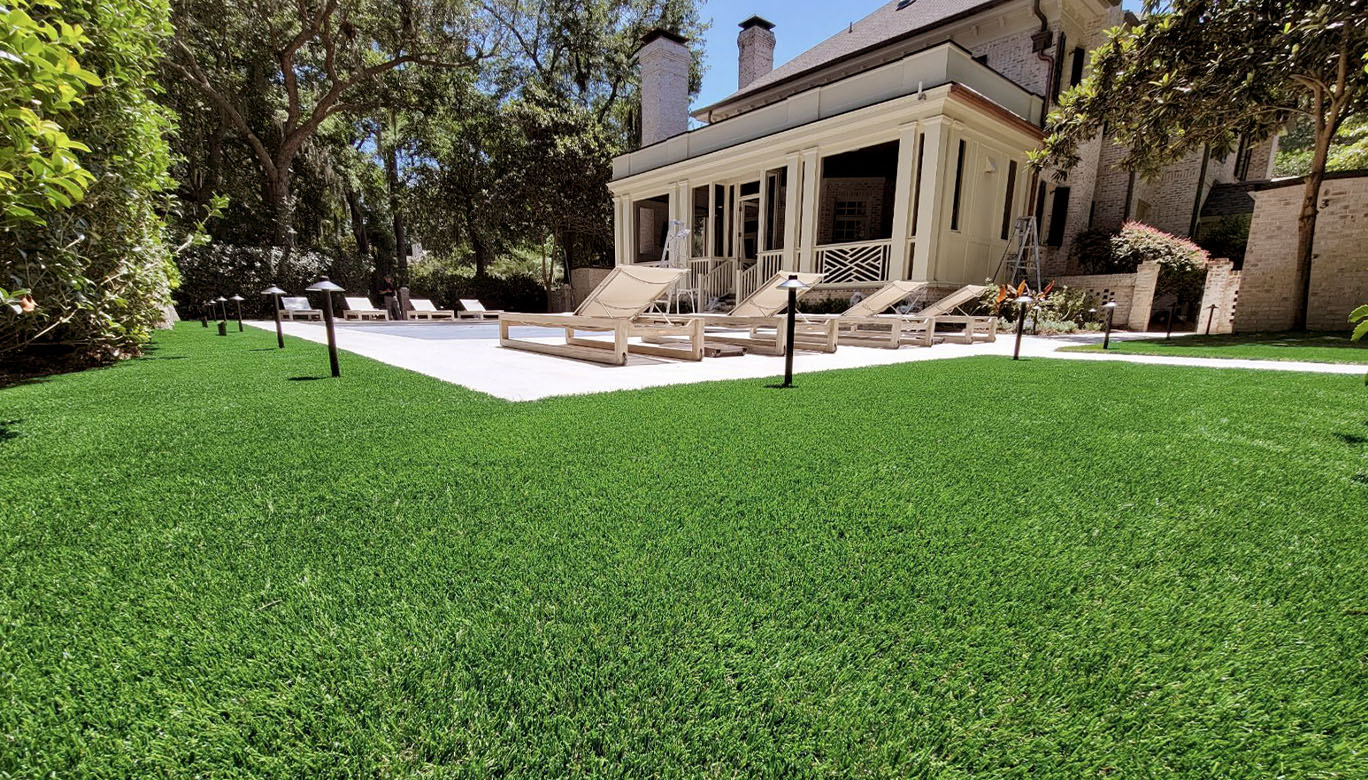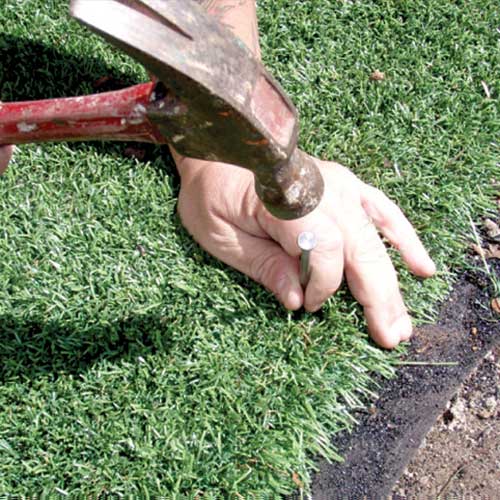Explore the Environmental Conveniences of Opting for Artificial Lawn Solutions
The adoption of synthetic grass services offers a compelling possibility to attend to pushing ecological difficulties. By dramatically lowering water usage and minimizing the application of harmful chemicals, these options not just promote sustainable landscaping but likewise protect neighborhood environments. Additionally, the reduced carbon footprint associated with decreased maintenance tasks contributes to an extra lasting approach to land administration. However, the implications of these advantages extend beyond simple conservation efforts, questioning about their long-lasting influence on environment preservation and general environmental equilibrium. Exploring these dimensions exposes an intricate interplay worth considering.
Water Preservation Advantages
One of the most considerable advantages of synthetic grass is its capability to conserve water. Typical lawn yards need considerable watering, especially in areas susceptible to dry spell or water constraints. In contrast, fabricated lawn does not need watering, considerably lowering the total demand for water sources. This attribute is especially advantageous in arid areas where water shortage is a pressing worry.
By eliminating the requirement for regular watering, synthetic grass adds to lasting landscape techniques and helps reduce the ecological influence of extreme water usage. Moreover, the conservation of water encompasses the reduction of runoff, which can lead to dirt disintegration and river air pollution.
Furthermore, the installment of synthetic grass permits house owners and communities to allot water sources a lot more effectively, concentrating on important uses such as drinking water and agriculture. The change in the direction of man-made turf not just promotes accountable water usage but likewise aligns with broader environmental goals targeted at maintaining all-natural sources.
As neighborhoods increasingly prioritize sustainability, the water preservation advantages of synthetic grass present a compelling situation for its adoption in industrial and domestic landscaping tasks.
Minimized Chemical Use
The transition to synthetic grass substantially reduces the dependence on chemical treatments frequently used in all-natural grass maintenance. Conventional turf management generally involves the application of plant foods, herbicides, and chemicals to promote development and control parasites. These chemicals can position dangers to human health, regional wild animals, and the atmosphere, contributing to dirt and water contamination.
In comparison, synthetic grass removes the requirement for these harmful substances. As soon as mounted, it calls for marginal maintenance, primarily including regular cleansing and seldom infill replenishment. This decrease in chemical use not only benefits the prompt atmosphere yet likewise contributes to broader environmental stability. By lessening the release of synthetic substances right into the ecosystem, man-made turf advertises healthier soil and water supply.
In addition, the lack of chemical runoff connected with man-made lawn installations aids protect neighborhood rivers from pollution, supporting aquatic life and keeping biodiversity. Phoenix turf companies. As communities significantly prioritize lasting methods, opting for synthetic grass offers a viable option that lines up with ecological preservation goals. Via this change, residential property owners can enjoy rich green spaces without endangering ecological health, leading the method for an extra sustainable future
Lower Carbon Impact

Furthermore, the setup of fabricated lawn can result in significant water conservation. Natural yards call for considerable amounts of water for irrigation, which not just contributes to the carbon impact connected with water removal and therapy yet additionally stress neighborhood water sources. In contrast, synthetic grass requires marginal maintenance, needing no watering, therefore dramatically reducing water usage and its connected power costs.
Furthermore, the long life of synthetic lawn adds to its decreased carbon influence. With a life-span of approximately 15 years or even more, the need for regular replacements is reduced, leading to much less waste and lower power usage in manufacturing and throwing away traditional lawn alternatives. Overall, man-made turf offers a sustainable option for ecologically conscious landscape design.
Environment Preservation
Habitat preservation is a crucial consideration in the debate over landscaping selections, specifically when contrasting fabricated lawn to natural turf. Natural turf lawns frequently call for considerable maintenance, including using chemicals, herbicides, and plant foods, which can detrimentally affect neighborhood environments. These chemicals can seep right into the soil and waterways, damaging native flora and fauna and interfering with regional habitats.
In comparison, man-made grass offers an opportunity to reduce the eco-friendly footprint of landscape design. By deciding for synthetic lawn, home owners can reduce the disruption of natural environments linked with typical grass care techniques. Fabricated grass eliminates the need for damaging chemicals, thereby protecting neighboring wild animals and keeping the stability of surrounding communities. The setup of artificial lawn can lead to the conversion of former turf areas into even more biodiverse landscapes, such as pollinator yards or native plant areas, which can support neighborhood wild animals.
Inevitably, the transition to synthetic grass not only saves water and lowers maintenance efforts yet additionally cultivates a more harmonious partnership between human activities and the natural surroundings, advertising habitat conservation in the process.
Long-Term Sustainability
Long-lasting sustainability is a vital consider reviewing the advantages of man-made turf over standard turf yards. Among the most substantial benefits of synthetic grass is its sturdiness; it can last approximately 15-20 years with Find Out More minimal upkeep, whereas natural yard calls for constant reseeding and replacement. This long life minimizes the need for consistent resources, such as water, fertilizers, and chemicals, which are vital for maintaining a healthy and balanced turf lawn.
Additionally, synthetic grass adds to a reduction in carbon emissions connected with yard find here treatment devices. Standard lawns often require gas-powered mowers, leaners, and blowers, every one of which add to air pollution. Turf installation phoenix az. In comparison, synthetic grass gets rid of the demand for such tools, promoting a cleaner setting
Additionally, the manufacturing of man-made turf increasingly uses recycled materials, boosting its sustainability profile. As manufacturers embrace green techniques, the environmental impact of synthetic lawn remains to reduce.

Verdict
The fostering of synthetic grass services presents substantial environmental benefits, including substantial water conservation, minimized dependence on dangerous chemicals, and a lower carbon footprint. Man-made grass help in preserving natural environments by lessening land disruption and advertising long-lasting sustainability via the usage of sturdy products. Jointly, these aspects underscore the potential of artificial turf to contribute favorably to environmental health and wellness and supply a sensible option to conventional landscape design practices in a significantly resource-conscious world.
In contrast, man-made turf does not need watering, significantly reducing the total demand for water resources. By decreasing the launch of artificial compounds right into the community, artificial grass advertises healthier dirt and water systems.
Furthermore, the installment of man-made turf can result in considerable water conservation. In contrast, man-made lawn needs very little upkeep, needing no watering, therefore dramatically reducing water usage and its associated energy prices.
